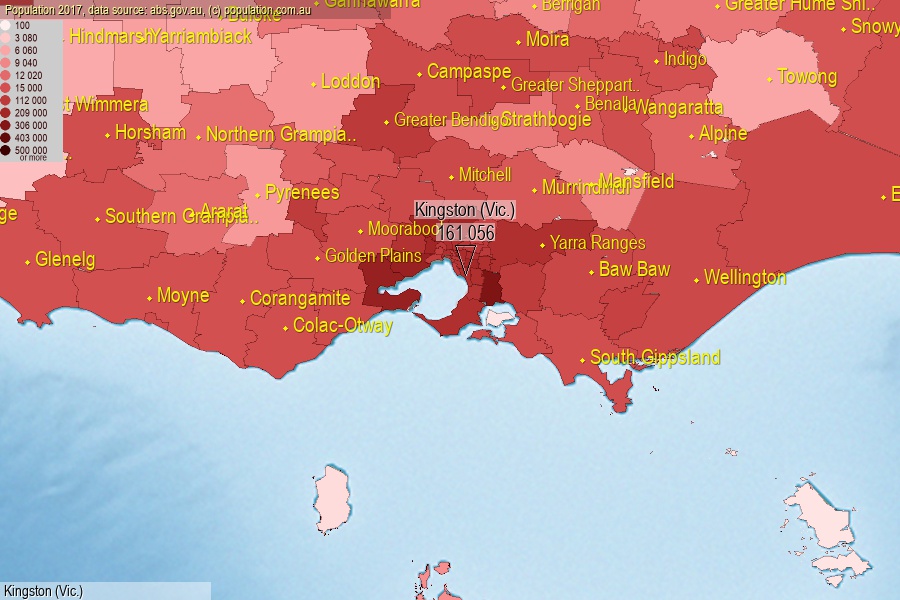 population.com.au
population.com.auLast official estimated population of Kingston (Vic.) City (as Local Government Area) was 161 056 people (on 2017-06-30)[2]. This was 0.65% of total Australian population and 2.505% of VIC population. Area of Kingston (Vic.) is 91.40 km², in this year population density was 1 762.10 p/km² . If population growth rate would be same as in period 2016-2017 (+1.33%/yr), Kingston (Vic.) population in 2025 would be 179 021. [0]



Click to enlarge. Kingston (Vic.) is located in the center of the images.
Population [people], population density [p./km²] and population change [%/year] [2]
[1996-2001] +0.52 %/Y
[2001-2002] +0.87 %/Y
[2002-2003] +0.73 %/Y
[2003-2004] +0.69 %/Y
[2004-2005] +0.71 %/Y
[2005-2006] +0.95 %/Y
[2006-2007] +1.52 %/Y
[2007-2008] +1.66 %/Y
[2008-2009] +2.26 %/Y
[2009-2010] +0.93 %/Y
[2010-2011] +0.61 %/Y
[2011-2012] +1.44 %/Y
[2012-2013] +1.26 %/Y
[2013-2014] +1.23 %/Y
[2014-2015] +1.32 %/Y
[2015-2016] +1.73 %/Y
[2016-2017] +1.33 %/Y
[0] Calculated with linear interpolation from officially estimated population
[1] Read more about LGA and Australian Statistical Geography Standard (ASGS) on abs.gov.au
[2] Population data from Australian Bureau of Statistics (Population and density: 2017; change: 2016-2017)
[3] Digital Boundaries: Australian Statistical Geography Standard (ASGS) 2016.